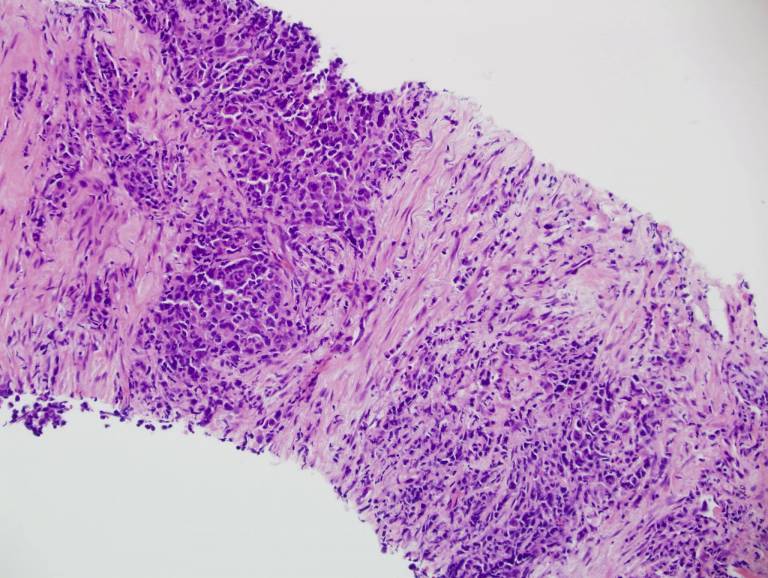Short: Storing and Sharing Microscope Images
Researchers at the UCL Cancer Institute who are working on a project involving the analysis of lung cancer pathology images needed to store their data in an easy to access and secure way

16 July 2019
Summary
| Project title | TRACERx |
| Department | Cancer Trials Department, UCL Cancer Institute |
| Research IT Service(s) | Research Data Storage Service (RDS) |
Problem
The TRACERx project involves the analysis of lung cancer pathology images to study tumour heterogeneity. Pathologists and scientists produce images with various types of staining (hematoxylin and eosin, and immunofluorescent staining) presenting the histopathological features of the human lung cancer and the surrounding normal tissue.
Samples are generated then scanned by a NanoZoomer S210 Digital slide scanner with a built in high-end microscope, captured by software called NDP.scan and put into a database on a PC connected to the equipment. Each sample produces an image of around 3GB in size.
Solution
The group were given 15TB of shared project space on the Research Data Storage Service where the researchers can upload their images directly from the Windows PC attached to the scanner. This process is relatively simple due to the fact that the project space is mapped as a network drive on the PC. They then use their own computers to access the data, again by directly mapping to their RDS project space, allowing them to analyse the images from there.
Once the images have been analysed, users can choose to share them using a service they use called NDPServe which they bought through the company that supplied the microscope. It is a server they host themselves running third party software with a web based front end. The user can logon and browse for images on their local and network drives (in their case RDS), link to the images on there and make them available for other lab members and collaborators to view and download remotely.
Not hesitating to recommend the RDS Service for allowing them to store all their research data in an easy to access and secure way, they would advise prospective adopters to make sure their departmental network has good transfer speed to get the best out of the service if transferring large files.
 Close
Close

